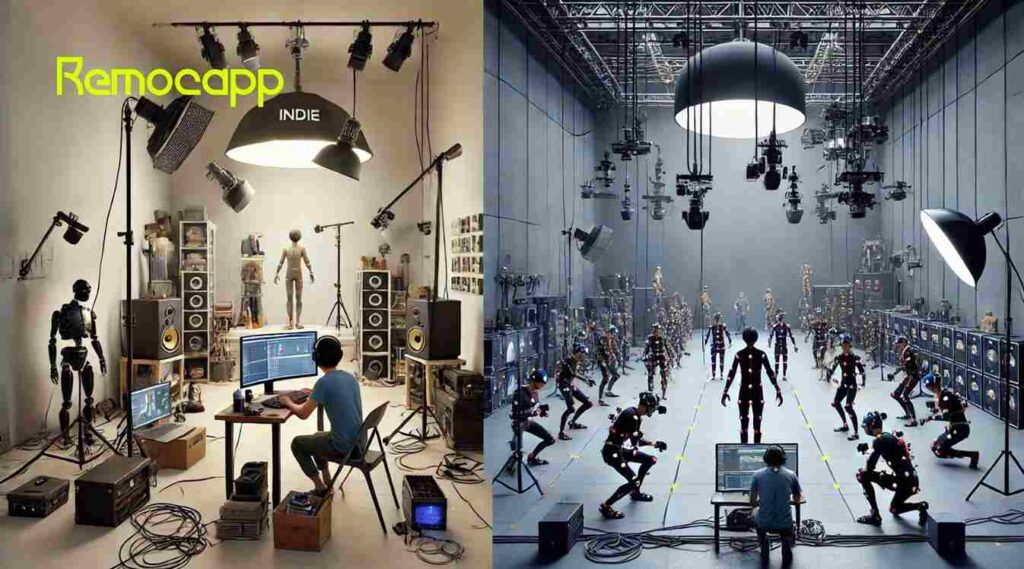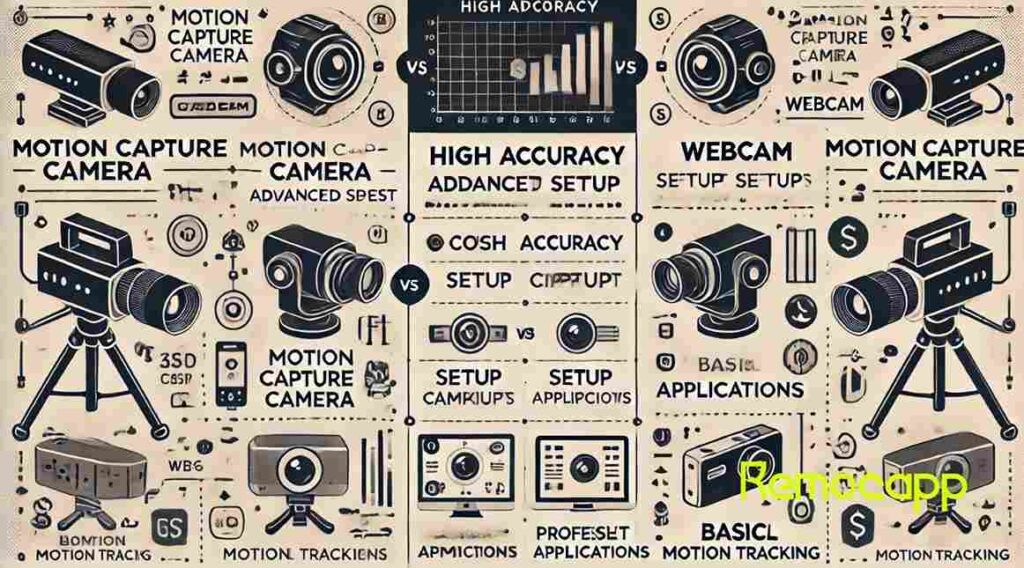Motion Capture Webcam: Which one is Right for You?
Writer
Alex LearyDate
05 Jan 2025
Share article

Motion capture plays a vital role in bringing innovation and realism to the gaming, film, and animation sectors. But as technology advances, creators are faced with a critical choice: Motion Capture Camera vs. Webcam Motion Capture. Should you invest in professional-grade cameras or explore the flexibility of webcam-based setups? This blog will help you weigh the pros and cons of both options, breaking down their key features, differences, and practical uses. Whether you’re an indie developer, a motion capture actor, or part of a full-scale studio, we’ve got you covered. Let’s figure out which motion capture solution is the right fit for your next project.
What Are Motion Capture Cameras?
Motion capture cameras are highly specialized devices designed for capturing intricate motion data with incredible accuracy. These cameras typically work in conjunction with markers, suits, and a sophisticated setup to track movement in real-time.
Key Features of Motion Capture Cameras:
- Superior accuracy and precision.
- Advanced features for capturing complex movements.
- Ideal for large-scale productions like AAA games and blockbuster movies.
- Requires professional setup and calibration.
What Is Webcam Motion Capture?
Webcam motion capture uses regular webcams paired with clever motion capture software to track motion. Thanks to AI-powered tools, you can now capture movements without the need for markers or expensive hardware.
Key Features of Webcam Motion Capture:
- Works with affordable, widely available webcams.
- Easy setup with minimal equipment.
- AI handles motion tracking in real time.
- Perfect for indie creators or smaller projects.
With tools like Remocapp v2.1, you can turn a couple of webcams into a full-blown mocap system. This is a game-changer for creators on a budget who still want great results. The markerless mocap capability in software like this simplifies the process even further, making it accessible for hobbyists and small teams.

Key Differences Between Motion Capture Cameras and Webcams
| Feature | Motion capture cameras | Webcam motion capture |
| Cost | Expensive | Affordable |
| Accuracy | Extremely precise | Moderate precision |
| Setup Complexity | Requires professional setup | Simple plug-and-play approach |
| Applications | High-budget films, AAA games | Indie games, small animations |
| Portability | Bulky and stationery | Portable and lightweight |
Pros and Cons of Each
Motion Capture Cameras
Pros:
- Top-notch precision for detailed motions.
- Trusted by professionals for big-budget projects.
- Packed with features for large-scale productions.
Cons:
- Comes with a hefty price tag for purchase or rental.
- Complicated setup that might require a team.
- Not exactly portable.
Webcam motion capture
Pros:
- Super affordable and easy to find.
- Quick setup, even if you’re a total beginner.
- You can take it anywhere—great for remote projects.
Cons:
- Not as accurate as dedicated mocap cameras.
- Might struggle with fast or complex movements.
- Lacks the advanced features of pro-level systems.
Webcam motion capture is particularly appealing for projects that don’t require extreme precision, such as indie games or smaller animation tasks.

When to Choose Which Option?
Your choice ultimately hinges on your project requirements and financial plan:
- Motion Capture Cameras: If you’re working on a high-budget project where every detail matters, like a blockbuster film or AAA game, these are your go-to.
- Webcams: Perfect for indie creators, animators, or small teams who need something affordable and practical without too much hassle.
If you’re a motion capture actor or a solo creator, webcam motion capture can save you a ton of money while still delivering solid results for your projects.
The Role of AI in Webcam Motion Capture
Here’s where things get exciting. AI-powered software has made webcam mocap way more reliable and user-friendly. Tools like Remocapp v2.1 turn ordinary webcams into powerful motion-capturing tools. With AI, you can:
- Track body and facial movements with surprising accuracy.
- Skip the expensive gear and still get great results.
- Capture motion anywhere—no fancy studio needed.
For example, Remocapp v2.1 lets you capture full-body motion using just 2 to 8 webcams. Its markerless mocap capabilities mean you don’t need any suits or markers, which makes it incredibly easy to use. Whether you’re creating indie games, animating short films, or exploring free motion capture tools, solutions like this make mocap more accessible than ever.
Conclusion
So, what’s the verdict? Motion capture cameras are amazing for precision-heavy, big-budget projects, but they’re not cheap or easy to set up. On the other hand, webcams paired with AI tools like Remocapp v2.1 make motion capture accessible, affordable, and flexible for smaller-scale creators.
At the end of the day, the best choice depends on what you’re working on and how much you’re willing to invest. Ready to explore your options? Check out Remocapp v2.1 and see how it can transform the way you capture motion!
FAQ
Motion capture cameras provide superior precision and are ideal for high-budget projects that require detailed motion tracking.
Yes, webcams can be used for professional projects, especially for smaller-scale tasks like indie games or animations, thanks to AI-powered tools.
Tools like Remocapp v2.1 can deliver great results with as few as 2 webcams, though more webcams can improve tracking quality.
Yes, AI-driven software like Remocapp enables markerless motion capture, simplifying the setup process.
Motion capture cameras are expensive to purchase or rent, while webcams are far more affordable and widely available.
0Comments
Participate in the discussion around this article
Leave your comment
Write your opinion or questions about this article
Related Articles

The Motion Capture Evolution: From Rotoscoping to AI-Driven Technologies
Writer
Emily RobertsDate
17 Jul 2024

Webcam Motion Capture: How to Capture Real Movements with Just Your Webcam
Writer
Alex LearyDate
22 Dec 2024

Marker vs. Markerless Motion Capture: Understanding the Key Differences
Writer
Emily RobertsDate
14 Aug 2024
